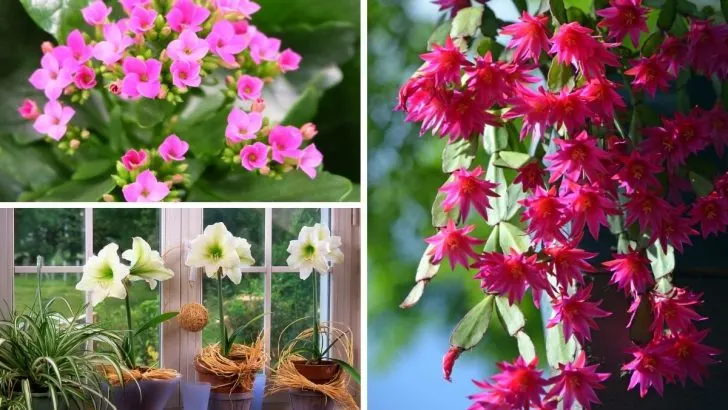Winter can be quite the dreary season for those of us who garden in colder climates. With shorter days and longer nights, the world outside seems wrapped in a perpetual gray blanket.
While the sun does occasionally make an appearance, it often brings with it biting cold. For those moments, we yearn for the vibrant hues of spring and the lively buzz of nature. Fortunately, our desire for color and life doesn’t have to be put on hold until springtime arrives.
Houseplants can be our oasis during this monochrome season, offering not just greenery but a burst of vibrant winter blooms. The key to brightening up these chilly months lies in choosing the right indoor companions.
Imagine your home filled with plants that bloom from November through March, providing a constant reminder that spring is on its way.
1. Cyclamen (Cyclamen persicum)
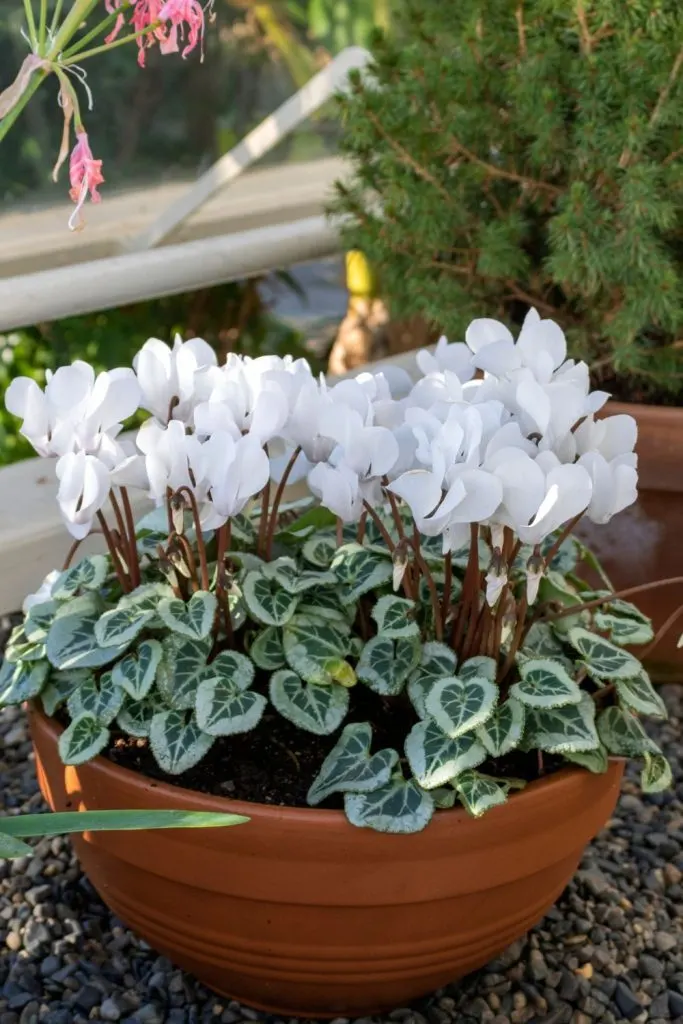
Meet the Cyclamen, a plant that thrives when other flora retreat into dormancy. Native to the Mediterranean’s rocky terrains and shady woods, cyclamen adapts beautifully to indoor living. During summer, this plant goes into a dormancy that might seem like it’s fading away, only to surprise us with its revival as the air cools.
This intriguing plant shows off with heart-shaped leaves, adorned with intricate silver patterns. But it’s the flowers that truly captivate with their wing-like, twisted petals. Available in a palette of lavender, magenta, white, and more, these blooms hover above the plant on bare stems, adding a dramatic flair to any room. Cyclamen flowers from November to March, making it a vibrant presence through the coldest months.
- Light: Bright, indirect
- Soil: Rich, well-draining mix
- Bloom Period: November to March
2. Holiday Cactus (Schlumbergera spp.)
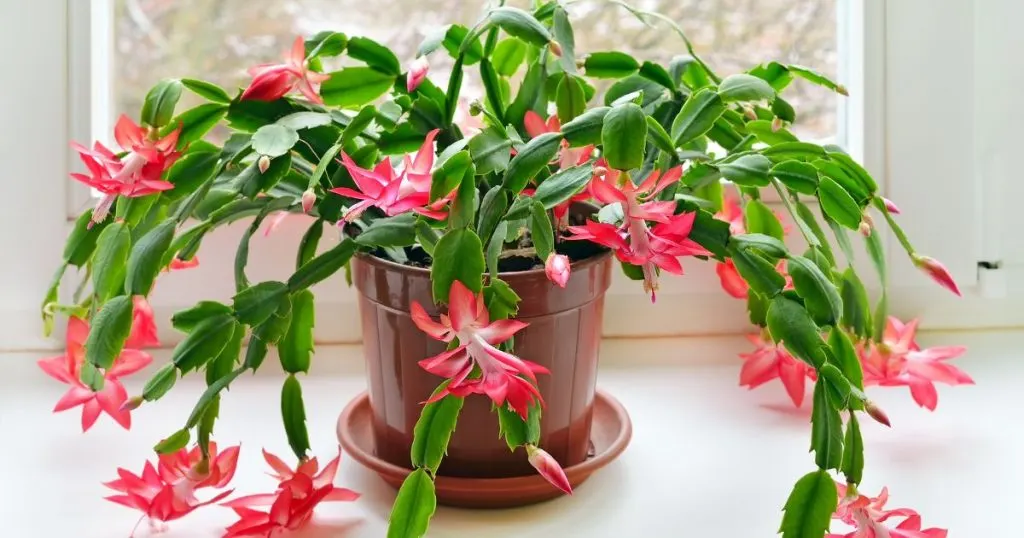
Who says cacti can’t be festive? Enter the Holiday Cactus, a delightful trio composed of Thanksgiving, Christmas, and Easter varieties. Originating from the lush rainforests of Brazil, these epiphytic cacti are unfazed by humidity, delighting us with their blooms for much of the year.
Each variety has its own blooming schedule, creating a seamless floral relay. Thanksgiving Cactus kicks off the season with blooms in cozy shades of pink and gold from November to December. Christmas Cactus follows with delicate flowers from late fall to February. Finally, the Easter Cactus wraps up the show with blossoms from February through May.
- Light: Bright, indirect
- Soil: Succulent mix
- Bloom Period: November to December (Thanksgiving), November to February (Christmas), February to May (Easter)
3. Kalanchoe (Kalanchoe blossfeldiana)
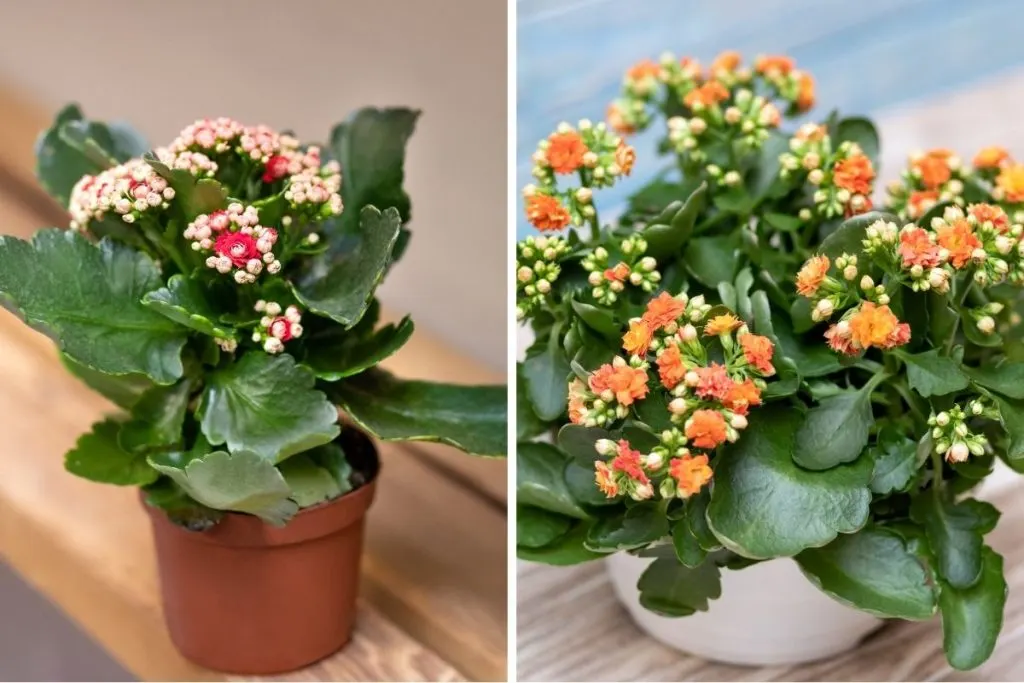
When it comes to long-lasting blooms, the Kalanchoe plant has few rivals. As days shorten, this colorful succulent begins to bloom, offering clusters of flowers above its lush foliage. Originating from Madagascar’s dry plateaus, kalanchoe is a low-maintenance plant, thriving in bright light with minimal water.
The blooming spectacle of kalanchoe extends for several months, making it an enduring burst of color in your home. With blooms ranging from vibrant reds to soft pastels, this plant is sure to brighten any winter day. Its restrained growth rate ensures that the floral display continues uninterrupted until the outside world awakens in spring.
- Light: Bright direct or indirect
- Soil: Rich, well-draining mix
- Bloom Period: November to May
4. Spring Bulbs
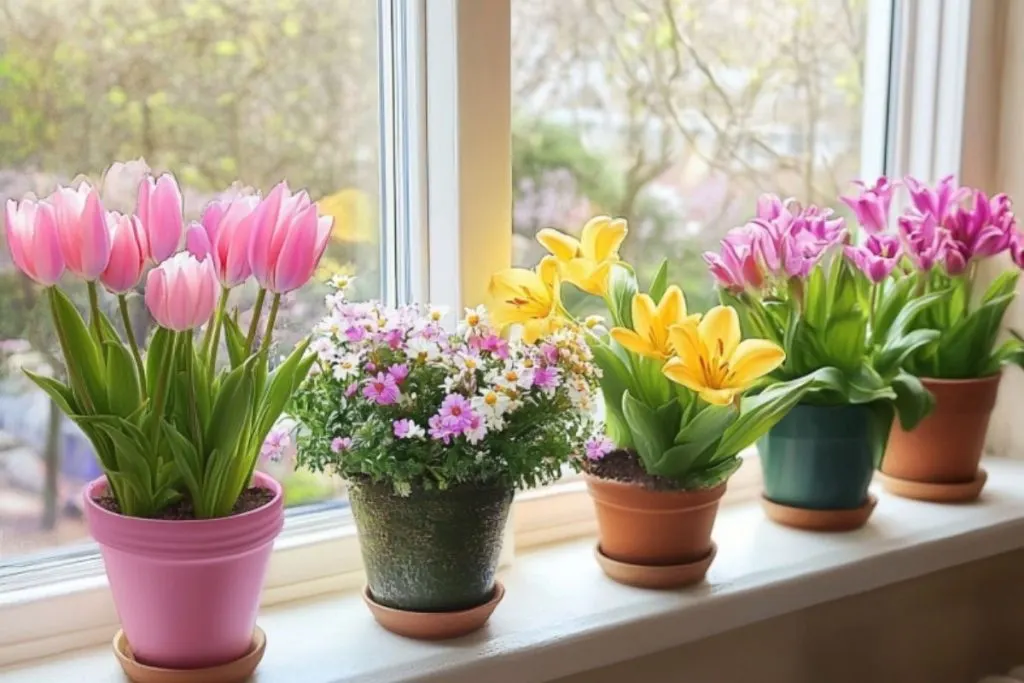
Spring bulbs are like nature’s delayed gift, offering blossoms that can break winter’s icy spell. While these bulbs traditionally bloom after a chilling period outdoors, they can be tricked into blooming indoors by simulating that cold span in a refrigerator or dark cellar.
With a little planning, you can enjoy a staggered bloom throughout winter. From the vibrant tulip and the charmingly petite crocus to the fragrant hyacinth, these bulbs offer a variety of shapes and scents. Each flower blooms just weeks after being coaxed from its chilly ‘nap.’
- Light: Bright direct or indirect
- Soil: Rich, well-draining mix
- Bloom Period: 3-4 weeks after chilling
5. Amaryllis (Hippeastrum spp.)
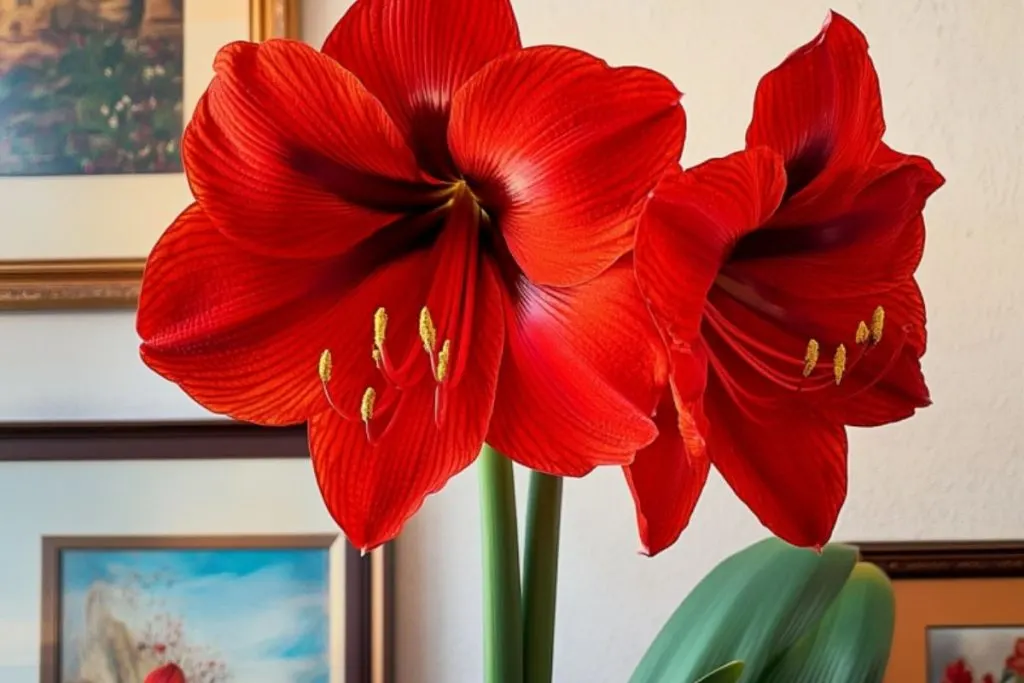
The Amaryllis is a majestic addition to any indoor garden, boasting large trumpet-shaped blooms that demand attention. Its broad color spectrum, featuring reds, pinks, and whites, along with intricate patterns, ensures that each plant is a unique spectacle.
Unlike other bulbs, amaryllis doesn’t need a dormancy period, making it an ideal choice for continuous blooms. Proper care post-blooming ensures more flowers in the future, allowing you to control its blossoming cycle for winter cheer.
- Light: Morning light in an east-facing window
- Soil: Rich, well-draining mix
- Bloom Period: 4 to 6 weeks after breaking dormancy
6. Pink Jasmine (Jasminum polyanthum)
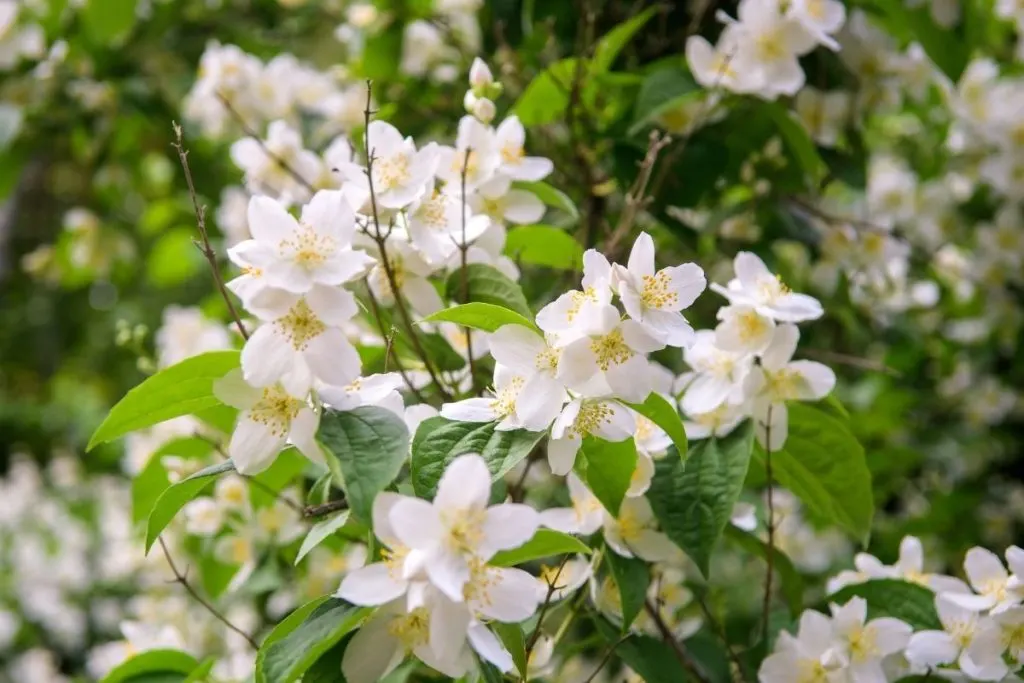
For a touch of tropical allure in the dead of winter, consider Pink Jasmine. Its starry blooms emit a captivating aroma that can transform any space into a fragrant haven. Originating from the mountainous regions of China, pink jasmine thrives indoors when offered a sunny window and cool temperatures.
Not just a visual delight, its sweet scent acts as a natural mood enhancer. Whether climbing a trellis or spilling from a hanging pot, pink jasmine’s cascading blooms will make you forget all about winter.
- Light: South-facing window that receives direct light
- Soil: Rich, well-draining mix
- Bloom Period: December to March
7. African Violet (Saintpaulia ionantha)
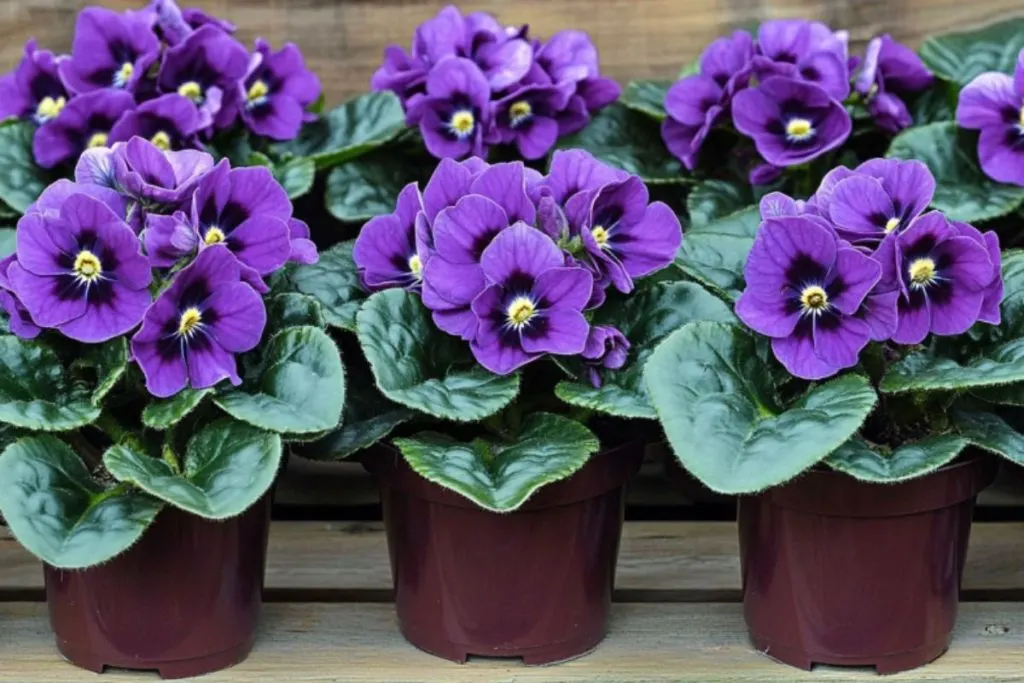
Few houseplants rival the African Violet for continuous blooming potential. With the right care, these charming plants can flower throughout the year. Discovered in the tropical forests of East Africa, African violets have been extensively cultivated, resulting in thousands of varieties with diverse colors and shapes.
These endearing plants boast flowers in hues of blue, pink, and purple. Their adaptability to indoor conditions, coupled with vibrant blooms, makes them a top choice for adding a splash of color to winter’s palette.
- Light: 10 to 12 hours of bright light
- Soil: Well-draining soilless mix
- Bloom Period: Year-round
8. Lace Flower (Alsobia dianthiflora)
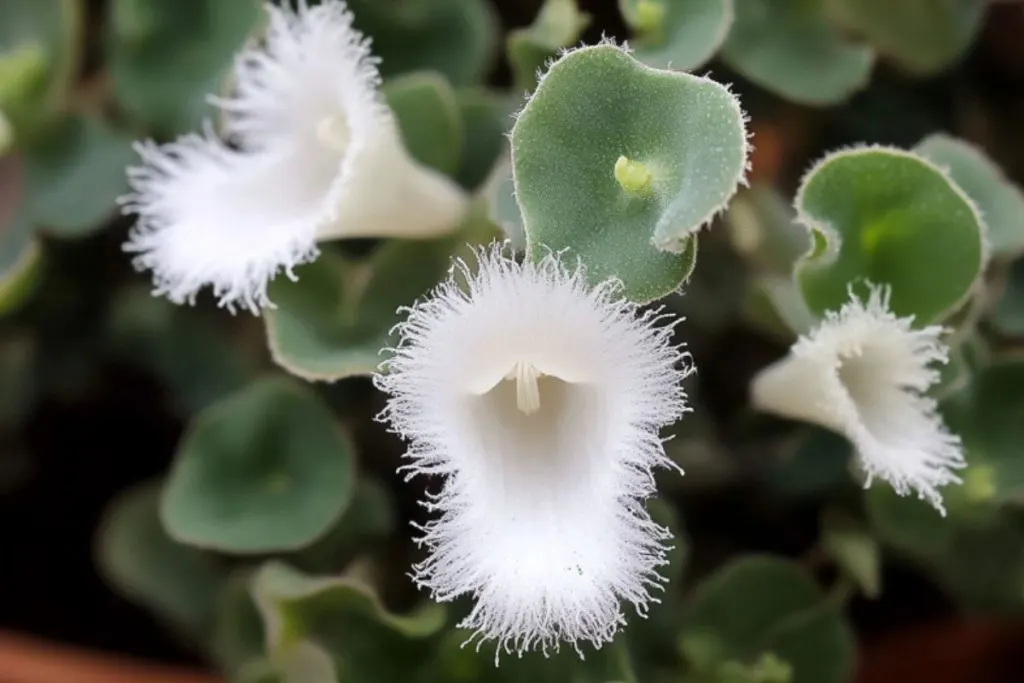
The Lace Flower is a delicate cousin to the African violet, offering a similar charm with its frilled white blooms. Known for its low-growing nature, this plant is ideal for hanging planters or mantles, where its trailing vines can cascade gracefully.
Native to Central America’s forests, lace flower enjoys warmth and abundant indirect light, readily rewarding you with continuous blooms. Its intricate flowers provide a soft elegance that enhances any indoor space.
- Light: 10 to 12 hours of bright light
- Soil: Rich, well-draining mix
- Bloom Period: Year-round
9. Anthurium (Anthurium andraeanum)
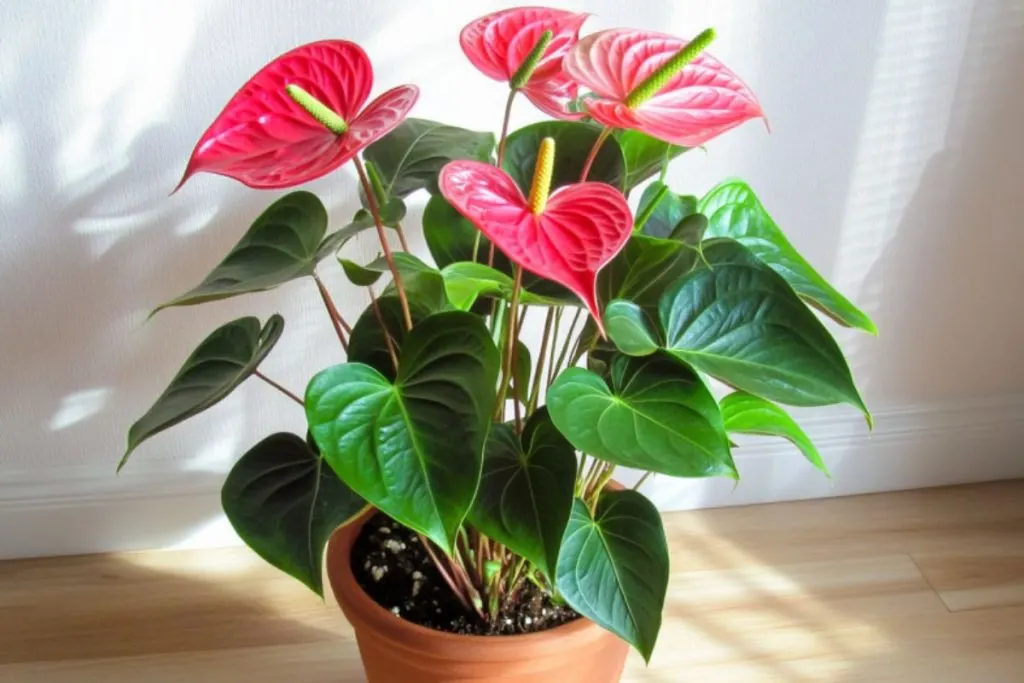
Known as the Flamingo Flower, the Anthurium offers an exotic flair with its glossy, heart-shaped spathes and bright yellow spadix. Thriving in humid conditions, this tropical beauty delivers bold color that’s a standout in any collection.
What sets anthurium apart is its ability to flower repeatedly with the right light conditions. As a testament to its tropical origin, anthurium prefers a humid environment and will reward you with long-lasting blooms when well-cared for.
- Light: Bright direct light in winter; indirect in summer
- Soil: Rich, well-draining mix
- Bloom Period: Year-round
10. Purple Shamrock (Oxalis triangularis)
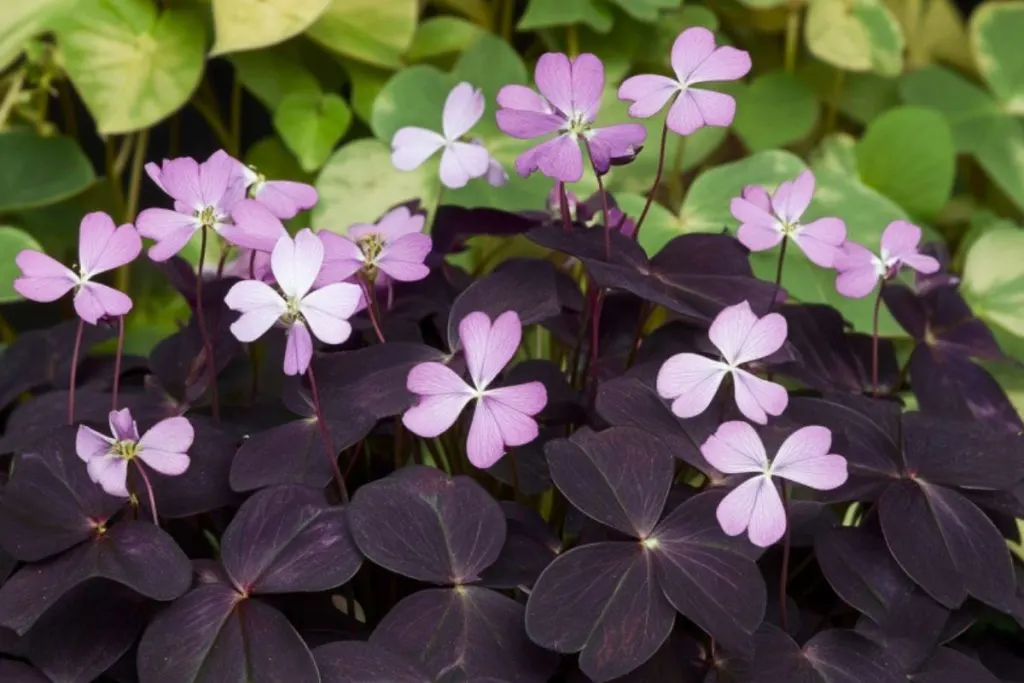
Lastly, we have the Purple Shamrock, a plant that combines ease of care with extraordinary color. Its triangular leaves mimic fluttering butterflies, reacting to light by opening during the day and closing at night. This vibrant plant owes its beauty not only to its foliage but also to its delicate blooms.
Native to South America’s rainforests, purple shamrock thrives when temperatures dip, generously flowering from fall through spring. Its whimsical charm is a constant source of joy as it transforms your indoor space with its lively presence.
- Light: Bright direct sunlight part of the day
- Soil: Rich, well-draining mix
- Bloom Period: November to March
With these ten captivating houseplants, you can transform your home into a winter wonderland of color and life. Though they require a bit more care than your standard greenery, the rewards they offer—through their vibrant colors and unique shapes—are well worth the effort. Embrace the challenge and let the delightful hues of winter blooms brighten your days and spirit.

